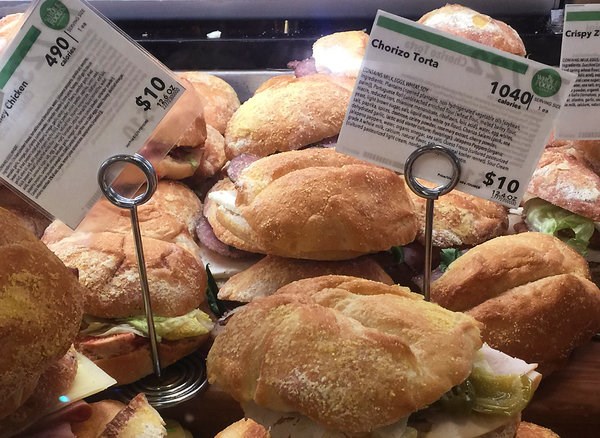As Americans consume one-third of total calories from foods prepared outside the home, it is important for them to know how many calories these foods contain, says the health department.

Commonly known fact: A poor diet increases the risk of heart disease, stroke, diabetes and some cancers, which are among New York City's leading causes of death.
According to the health department, one-third of all meals consumed by Americans are prepared outside the home -- knowing how many calories are in these foods has never been more important. Therefore, the city is enforcing new calorie labeling rules, announced Health Commissioner Dr. Mary T. Bassett on Monday.
"Over the past decade, New Yorkers have grown accustomed to having the information they need to make informed food choices when eating out, and we look forward to expanding New Yorkers' access to basic information about their food," said Bassett.
According to the health department, one-third of all meals consumed by Americans are prepared outside the home -- knowing how many calories are in these foods has never been more important.
Under the new ruling, chain restaurants, as well as chain convenience stores and grocery stores offering prepared foods, are required to post calorie counts on menu boards and a statement informing customers of the recommended dietary intake for adults of 2,000 calories a day. Establishments that do not comply will be subject to fines ranging from $200 to $600.
In 2010, calorie labeling requirements became a part of the Affordable Care Act but were not implemented. Since 2015, New York City's efforts to enforce its updated and expanded calorie labeling rule has been on hold due to federal government delays. Last year, the city tried to move forward with implementing the new requirements, but the health department was sued by a group of trade organizations representing convenience stores and restaurants.

Brooklyn Councilmember Rafael Espinal, representing the 37th District including portions of Bedford Stuyvesant, Brownsville, Crown Heights, East New York, Bushwick and Cypress Hills, is supporting the move.
"We must make every effort to ensure consumers have the information they need to make decisions," said Espinal. "As an advocate for healthy eating and locally grown produce — especially in low-income neighborhoods prone to food deserts — I support this move, which will promote nutrition and reduce disease."
The new calorie labeling rule is complemented by the health department's 2015 sodium warning rule, which requires chain restaurants to place salt shaker icons next to menu items containing 2,300 mg of sodium or more, the daily recommended limit. The sodium warning rule also requires these restaurants to post a warning sign, stating that high sodium intake can increase blood pressure and the risk of heart disease and stroke.
New Yorkers can also do their own research by comparing restaurant nutrition information on menustat.org, a free resource provided by the city with nutrition data from top national chain restaurants.



